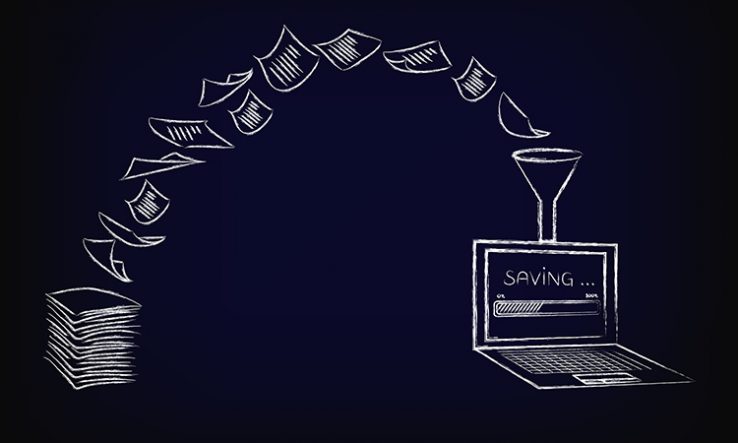
Looking back and moving forward means rethinking the value of data, says William Kilbride
The lockdown in March saw the UK make the most rapid, most extensive, and perhaps most unexpected digital turn in its history. We’ve long known about digital platforms for teaching, learning and research, but few could have anticipated how central collaboration and conferencing tools such as Zoom and Microsoft Teams would become.
Historic decisions affecting billions around the world have been taken on platforms barely a decade old. In the UK, the government’s response to Covid-19 is recorded in myriad WhatsApp and text messages between ministers and officials.
All of these decisions have to be transparent, all involved have to be accountable, and a great volume of the record will be subject to the Public Records Act and freedom of information laws. Similar issues arise in every government agency, quango, local authority and university across the land.
How will we keep these primary sources from this time of crisis? Institutions across society need to act quickly to ensure digital materials will be available for the long term. For universities, this is also a matter of compliance with funders and regulators. To that end, on 5 November, higher education IT organisation Jisc is hosting an online event to explain the importance of digital preservation.
As well as helping us understand how we got here, digital preservation is crucial to shaping a route out of the crisis. A vaccine for Covid-19, for example, needs to be trusted. For that, the research supporting it needs to be reproducible and transparent.
In this post-truth era, it is crucial that research and clinical trials are documented and authenticated at the point of creation. Rows over evidence or access could disrupt the implementation of treatments and empower anti-vax movements. Preserving research outputs and understanding their workflows are the best ways to enable robust scientific scrutiny, improve outcomes and protect against conspiracists and hoaxers.
The global search for a vaccine also illustrates the growing volume, complexity and importance of data. For instance, when we look back on the history of the web page, we see that web archiving has evolved tremendously.
In the 90s, the HTML used to encode and design individual web pages was adapted from printing mark-up. Preserving this data involved copying pages and storing them safely. Since then, the internet has evolved into a complex entity of databases, personalisations and embedded code, structured by things like authentication services and location-aware tools, not to mention users’ browsing histories and preferences.
The human element
Technology has developed faster than skills and policy. To keep up, preservation also needs to change continuously, alongside investment in digital skills in the workplace and the classroom. We should prioritise the human element in all this, understanding better the strengths and weaknesses of technology and orienting it to opportunities we too often overlook. Digital preservation is a socio-technical problem: if all we can offer is a technological solution, we will never solve the problem.
Put another way, we don’t do digital preservation for the sake of the bits and bytes, but for the real world impacts. Ultimately, the value is in healthier, wealthier, safer, smarter, greener, more creative and more transparent communities, which we won’t be able to build, or even imagine, without the intergenerational opportunities we need to secure.
The way we understand and approach record-keeping also needs to change. Instead of seeing collection and preservation as the two ends of the data lifecycle, we should look to move preservation upstream, so that data can be preserved at the point of creation.
That means agencies taking responsibility for their data in a very different way. We can’t leave it to chance. Jisc is talking to archivists and librarians, but to integrate preservation at the outset we need to engage the people who design and build digital infrastructures.
We also need to talk about the value of data in material terms. Companies and institutions seem better at measuring the depreciation of their office furniture than at considering the long-term value of their data. If data are an asset, then we need to find a way to include that on the balance sheet.
Getting digital preservation right is a once-in-a-generation challenge. Digital materials age in dog-years and the long term is shorter than we think. Historically, it was institutions such as libraries and archives that joined our Digital Preservation Coalition, but in today’s world, digital preservation is an issue for everyone.
William Kilbride is director of the Digital Preservation Coalition
This article also appeared in Research Fortnight